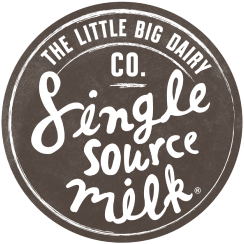Lactose-free dairy products are rapidly gaining popularity. The market is valued at $602 million in Australia in 2024 and is projected to grow at an annual rate of 31%, reaching $1.5 billion by 2028 for Australia and New Zealand.
The increase is largely driven by the rise in lactose intolerance, currently estimated to affect 30-60% of the Australian population. However, it also gains from the perceived benefits of lactose-free options.

Lactose Problems and How They Are Overcome
Lactose is the form of sugar found in milk. It is usually broken down into more easily managed glucose and galactose by naturally occurring lactase enzymes. However, some people do not have sufficient lactase enzymes in their digestive system and so are unable to make the lactose digestible. This causes adverse reactions such as stomach problems and means that people who are lactose intolerant cannot have most dairy products.
The problem is now being solved by the availability of lactose-free milk and other dairy products. This is achieved by adding the lactase enzyme to the milk itself to break down the complex sugar lactose and convert it into its simple constituents of glucose and galactose. These are easily digestible, so even those who do not produce enough lactase naturally can now consume milk and other dairy products without experiencing any problems.
The Benefits of Drinking Lactose-free Milk
Those who are lactose intolerant have previously missed out on the benefits available from milk. Now, however, they can enjoy lactose-free milk and experience all its benefits:
- Due to the addition of the lactase enzyme, milk is much easier to digest and will not cause digestive tract discomfort that can include diarrhoea, indigestion, and stomach pains.
- Lactose-free milk tastes sweeter than normal milk because glucose and galactose are about 70% sweeter than lactose. So that means you may not need to add sugar to your cereals.
- Since lactose-free milk is simply cow's milk with added lactase, it contains the same beneficial nutrients, such as calcium and vitamin D, which help to build strong and healthy bones. A single cup of lactose-free milk comprises 30% of your recommended daily calcium intake and 25% for vitamin D intake.
- Milk also contains vitamins A and B12 as well as minerals such as phosphorus, which are essential for your well-being.
- A cup of lactose-free milk has eight grams of protein and supplies all the amino acids your body needs each day. Protein helps muscle recovery after exercising and also supports the immune system.
Some dairy products contain little lactose, typically Gouda and various hard cheeses such as Parmesan and Cheddar, while butter is also low in lactose. Milk and various fermented products, including yoghurt, ice cream, and various desserts, are not suitable for lactose-intolerant people.
Other forms of milk are available as alternatives, such as nut milk, although they don't contain the same beneficial minerals and nutrients as cow's milk. Lactose-free milk, however, now enables everyone to enjoy the taste and benefits of milk and dairy products without worrying about any harmful effects.






